We introduce you Shinjo Festival, the traditional local festival that has the over 250-year- long history, from the origin to the present day. We also introduce you the attraction of the festival and its relationship with Nogawa family.
“What’s Shinjo Festival?”
■The Origin and history of Shinjo Festival
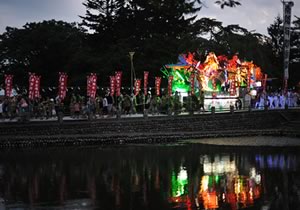
Shinjo Festival is taken place from August 24th to 26th every year, crowded with over 500,000 people. It was nominated as the nationally important intangible folk cultural property in 2009, as “Float event at Shinjo Festival”.
In 2016, this float event at Shinjo Festival was registered to UNESCO as one of the 33 “Mountain, Hoko(spear), and Yatai(food cart) events”.
This festival dates back to the 5th year of Horeki (1755) in Edo era. It is filled with the traditions and cultures over 260 years.
Masanobu Tozawa, the fifth feudal lord of Shinjo clan at that time, ordered to hold the festival of Tenmangu, the god of Tozawa, because many people were killed by the great famine occurred in the previous year caused by cold weather. The original purpose of this festival was to maintain high motivation of citizen and pray for rich cultivation of farmland.
It used to be that the people brought what they had from home to the castle for the float decoration and paraded around the town. However, the festival style started changing after Shinjo floats federation was founded in the early period of Showa era, to the current style “The longest float in Japan” with gorgeously decorated floats.
■The Feature of Shinjo Festival
“Evening festival” on August 24th
The “Yatai” floats start parading. Local young people made them working in evenings and on weekends over 2 months. The fantasy world appeared when they turn on the lights of Yatais featuring the famous scenes of Kabuki and other stories. The climax of the event is where floats approach toward “Abies” (the public squre) in front of Shinjo station.
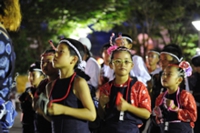
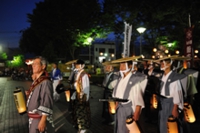
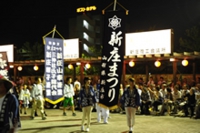
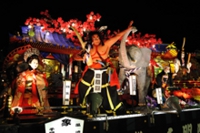
“Book festival” on August 25th
Unlike “Evening festival”, this Book festival is an old fashioned and religious parade, in which people carry potable shrines that remind us of samurai eras. Led by the voice “Go down, Go down”, the portable shrines parade through the town. Floats follow them through the entire city of Shinjo until evening.
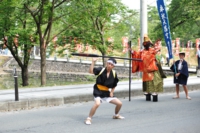
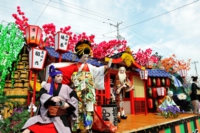
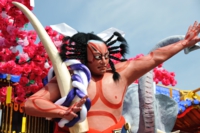

“After festival” on August 26th
”Exhibition floats” is to display all the floats which were created by citizen and used for parade.
At this event, Hayashi Wakaren performs Hayashi music, and you can look at the floats closely and take pictures of them while enjoying Hayshi Wakaren’s performance.
Also, Hagino/Nitayama Shikako Shishi Odori(Dance) is performed. The dancers are dressed as Shikako. This dance style is common in Iwate prefecture, but Shikako dances which imitate antelopes are very rare.
This Shishi Odori is also one of the art work created by Nogawa family.
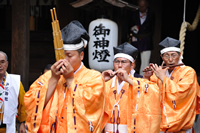
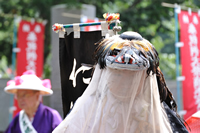
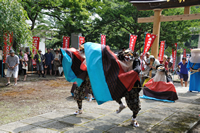
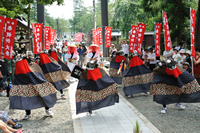
■The involvement of the Nogawa Family with the festival
The first sculptor, Hokuzan Nogawa , was born in Obanazawa city, Yamagata. After his training in Tokyo, he came back to this area and worked as a sculptor. He also created Bunraku dolls and stage dolls.
His reputation drew many people’s attention, including the people in Shinjo city. They visited him in Obanazawa and asked him to make stage dolls for Shinjo festival. That was how his involvement with the festival started.
Shinjo festival has the history about 260 years. More than half of the time, Nogawa family has been involved with it as a doll creator.
In early days under the first generation, dolls were sold to each town after the festival, but currently the dolls are for rent only. That is because the contents of float change each year, and financial concern arose on each town. Today, there are 20 towns that bring floats with them at the festival. All of them use the dolls created by Nogawa family.


